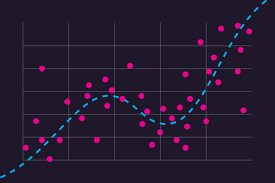Ridge vs lasso Regression
Description of the 2 two regression model variants i.e. Ridge and Lasso Regression
ML CONCEPTS
Trevor Muchenje
7/26/20232 min read


Regression models are widely used in data science and machine learning for predicting numerical outcomes. However, these models can suffer from overfitting when the number of features is large or when multicollinearity exists among predictors. To address these issues, regularization techniques like Ridge and Lasso regression come to the rescue. Both methods add penalty terms to the traditional linear regression cost function to control the model's complexity, but they do so in slightly different ways. In this article, we will compare Ridge and Lasso regression and highlight the scenarios where each technique is best suited.
Ridge Regression: Ridge regression, also known as L2 regularization, adds a penalty term proportional to the sum of the squared values of the regression coefficients. The objective function in Ridge regression is given by:
Cost(Ridge) = RSS (Residual Sum of Squares) + λ * Σ(coefficient^2)
Here, λ (lambda) is the regularization parameter that controls the amount of shrinkage applied to the coefficients. As λ increases, the coefficients are pushed closer to zero, reducing model complexity and mitigating multicollinearity issues.
When to use Ridge Regression:
Ridge regression is particularly effective when dealing with high-dimensional datasets, where the number of features is significantly larger than the number of data points. In such cases, Ridge helps stabilize the model and prevents overfitting.
When multicollinearity exists among predictor variables (i.e., when independent variables are highly correlated), Ridge regression can effectively handle this situation by distributing the impact across correlated features rather than favoring one over the others.
Ridge regression is generally a safe choice when you suspect that all the features in your dataset are relevant for predicting the target variable. It might not perform as well if some features are entirely irrelevant or should be excluded.
Lasso Regression: Lasso regression, also known as L1 regularization, adds a penalty term proportional to the sum of the absolute values of the regression coefficients. The objective function in Lasso regression is given by:
Cost(Lasso) = RSS (Residual Sum of Squares) + λ * Σ(|coefficient|)
Similar to Ridge, λ is the regularization parameter, but in Lasso regression, it has a sparsity-inducing effect. As λ increases, some of the coefficients are driven to exactly zero, effectively performing feature selection and eliminating irrelevant predictors.
When to use Lasso Regression:
When working with datasets that have a large number of features, but only a few of them are likely to be truly important predictors, Lasso regression is a better choice than Ridge. It automatically selects the most relevant features and sets the coefficients of the irrelevant features to zero, thus creating a sparse model.
Lasso regression is useful when you want to perform feature selection and identify the most critical predictors to simplify the model and enhance interpretability.
If your dataset has multicollinearity issues, Ridge might perform better. Lasso tends to pick one of the correlated features and set others to zero, potentially leaving out valuable information.
In summary, choosing between Ridge and Lasso regression depends on the specific characteristics of your dataset and the objectives of your analysis. If you have a large number of features and suspect multicollinearity, Ridge regression is a safer bet. On the other hand, if you believe that only a subset of features is relevant and want to perform feature selection, Lasso regression is the way to go. A common approach is to try both methods and tune the regularization parameter λ using cross-validation to find the best-performing model for your specific problem.
